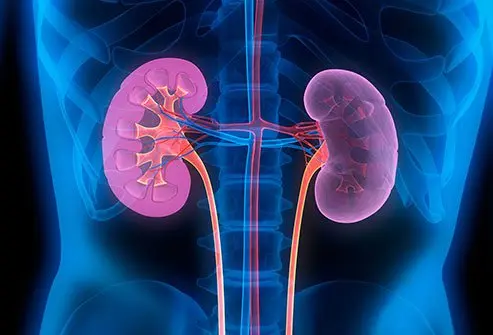In the United States, managing potassium levels is a critical health concern for many individuals, especially those with chronic kidney disease (CKD) or other conditions that affect kidney function. Hyperkalemia, or high potassium levels in the blood, can lead to serious complications, including heart arrhythmias and even cardiac arrest. Understanding how to lower potassium levels quickly is essential for those at risk.
This article explores safe and effective methods to manage and lower potassium levels, including dietary changes, lifestyle adjustments, and medical treatments. Whether you’re dealing with acute hyperkalemia or chronic issues, this guide provides valuable insights to help you take control of your health.
Understanding Hyperkalemia
Hyperkalemia occurs when there’s an excess of potassium in the bloodstream. Potassium is an essential mineral that helps regulate fluid balance, muscle contractions, and nerve signals. However, when levels become too high, it can disrupt these functions and lead to severe health problems.
Approximately 1 in 2 people with predialysis CKD will develop hyperkalemia, according to the National Kidney Foundation (NKF). The kidneys are responsible for removing excess potassium from the body, but impaired kidney function makes it harder for the kidneys to carry out this role.
Hyperkalemia can affect anyone and may occur in up to 3% of people in the United States. It’s important to recognize the symptoms, which include weakness, numbness, and tingling that starts in the legs and moves upward. Severe cases may cause paralysis and even respiratory failure.
Emergency Hyperkalemia Treatment
If you experience symptoms such as trouble breathing, extreme muscle weakness, severe abdominal pain, or signs of a heart attack, seek immediate medical attention. Acute hyperkalemia is a medical emergency that requires treatment in a hospital.
At the hospital, doctors will run tests, including an electrocardiogram to monitor your heart. Treatment will depend on the cause and severity of your hyperkalemia. This may include removing potassium from your blood with potassium binders, diuretics, or in severe cases, dialysis.
Medications such as insulin and albuterol work by moving potassium out of the blood and into cells. Meanwhile, calcium fixes the balance of potassium in the heart, preventing arrhythmias. These medications start working in a few minutes, although they don’t fix the root cause. People with very high blood potassium levels may also need dialysis, which uses a special machine to filter the potassium from your blood.
Chronic Hyperkalemia Treatment
Chronic hyperkalemia, which develops over the course of weeks or months, can usually be managed outside of the hospital. Treatment usually involves changes to your diet and medications, starting a potassium-lowering medication, or taking a diuretic.
Your treatment plan for hyperkalemia may vary depending on whether you’re dealing with an acute episode of hyperkalemia or managing chronic hyperkalemia. If you have chronic hyperkalemia, your doctor may recommend a low potassium diet and prescribe medications such as diuretics or potassium binders.
Making Dietary Changes
- Monitoring Intake
Taking control of your diet is a primary and effective way to manage potassium levels. Monitoring potassium intake is key. This starts with understanding which foods are high in potassium. Potassium-rich foods include bananas, oranges, tomatoes, and leafy greens, among other foods. While many healthy foods are potassium-rich, moderation is essential. Keep a log of which potassium-rich foods you consume so you’re aware of how much you’re eating.
- Know the Facts
You may have heard that ACV gummies can help lower your potassium level. While apple cider vinegar is a popular natural remedy with various health claims, its impact on potassium levels isn’t extensively studied. ACV itself doesn’t contain significant amounts of potassium. However, some people believe that it might lower potassium levels indirectly through its potential to alter digestion and nutrient absorption. You can’t rely on supplements alone to balance your diet, though. Instead, you should eat well and monitor your potassium intake.
Note: You should not take ACV if you take insulin or insulin-stimulating medications, diuretic drugs, or Digoxin (Lanoxin). These drugs are known to already lower potassium levels and taking ACV can further drop levels to an extreme low.
- Portion Control
Controlling portion sizes can help regulate potassium intake. While fruits and vegetables are essential for a balanced diet, excessive consumption can contribute to elevated potassium levels. Work with a registered dietitian to develop a personalized meal plan that considers your individual health conditions and dietary requirements. If you’re still wondering about ACV, talk with a dietitian about it.
- Cooking Techniques
Cooking techniques also play a role in potassium management. Boiling or soaking vegetables in water and discarding the liquid can reduce potassium content. Vegetables that have been par-boiled, or partially cooked by boiling, can then be roasted, fried, or grilled. By being mindful of dietary choices and cooking methods, individuals can take an active role in lowering their potassium levels.
Making Lifestyle Adjustments
- Hydration
In addition to dietary changes, certain lifestyle adjustments can contribute significantly to managing potassium levels. For instance, staying hydrated is a simple, yet effective, way to support kidney function and flush excess potassium from the body. Adequate water intake maintains a healthy balance and promotes the excretion of potassium through urine.
Keep a water bottle with you regularly to improve your intake. If you struggle with drinking plain water consider infusing it with enhancers like cucumber slices, mint leaves, or lemon. Avoid drinks with electrolytes, as they can contribute to higher potassium levels.
- Current Medications
Another lifestyle adjustment involves reviewing medications, which is necessary for individuals with high potassium levels. Some medications, such as certain blood pressure drugs and supplements, can contribute to potassium buildup. Consult with your doctor to evaluate the impact of your medications and supplements you take on potassium levels. You may need to explore potential adjustments.
- Prescribed Medications
Your doctor may use diuretics or potassium binders as part of a treatment plan for elevated potassium levels. Diuretics, commonly called water pills, work by increasing urine production, aiding the kidneys in eliminating excess potassium from the body. However, you need to monitor using them, as excessive fluid loss can lead to dehydration, which can actually increase potassium levels.
On the other hand, potassium binders, such as sodium polystyrene sulfonate, act in the digestive tract to bind excess potassium. This action prevents its absorption into the bloodstream. This medication can be beneficial for individuals with chronic kidney disease or those unable to tolerate diuretics. You may want to talk to your doctor about these options.
- Physical Activity
Regular exercise is another lifestyle factor that can influence potassium levels. Physical activity stimulates blood flow and aids in the removal of excess potassium through sweating. However, it’s important to strike a balance, as excessive exercise can lead to dehydration. Be sure to drink plenty of water to maintain hydration levels while exercising.
Maintaining Healthy Potassium Levels
Managing high potassium levels requires a multifaceted approach that involves dietary changes and lifestyle adjustments. Recognizing the impact of potassium, understanding symptoms, and being aware of risks are essential steps in controlling your health. Following the tips in this article, you can actively lower your potassium intake. By taking steps to adjust your potassium levels, you can safeguard your well-being and mitigate the risks.
Lower your potassium levels today, and live well tomorrow.
Meta Title: How to Lower Potassium Levels Quickly
Meta Description: Learn safe and effective methods to lower potassium levels quickly. Discover dietary changes, lifestyle adjustments, and medical treatments.
Author: Dr. Emily Thompson
Title/Role: Medical Expert and Health Writer
Credentials: Dr. Emily Thompson is a board-certified internal medicine physician with over 15 years of experience in patient care and health education. She has contributed to numerous health publications and is dedicated to helping individuals manage chronic conditions effectively.
Sources:
– National Kidney Foundation
– Mayo Clinic – Hyperkalemia
– WebMD – Potassium Levels
Internal Links:
– Understanding Kidney Disease
– Healthy Diet Tips
– Exercise and Health
Featured Snippet:
To lower potassium levels quickly, consider making dietary changes, staying hydrated, and consulting a healthcare professional. Medications such as diuretics and potassium binders may also be prescribed. Always seek medical advice for severe symptoms.
Call to Action:
Stay updated with the latest health tips and stay informed about managing potassium levels. Explore more articles on our website for comprehensive health guidance.
URL Slug: how-to-lower-potassium-levels-quickly
Image Optimization:














More Stories
What Is Yodo Para Tiroides and How Does It Affect Thyroid Health?
What is WSET? A Comprehensive Guide to Wine Education
US Trending News: What Are Winter Bones? A Guide to the Seasonal Trend in Bone Health